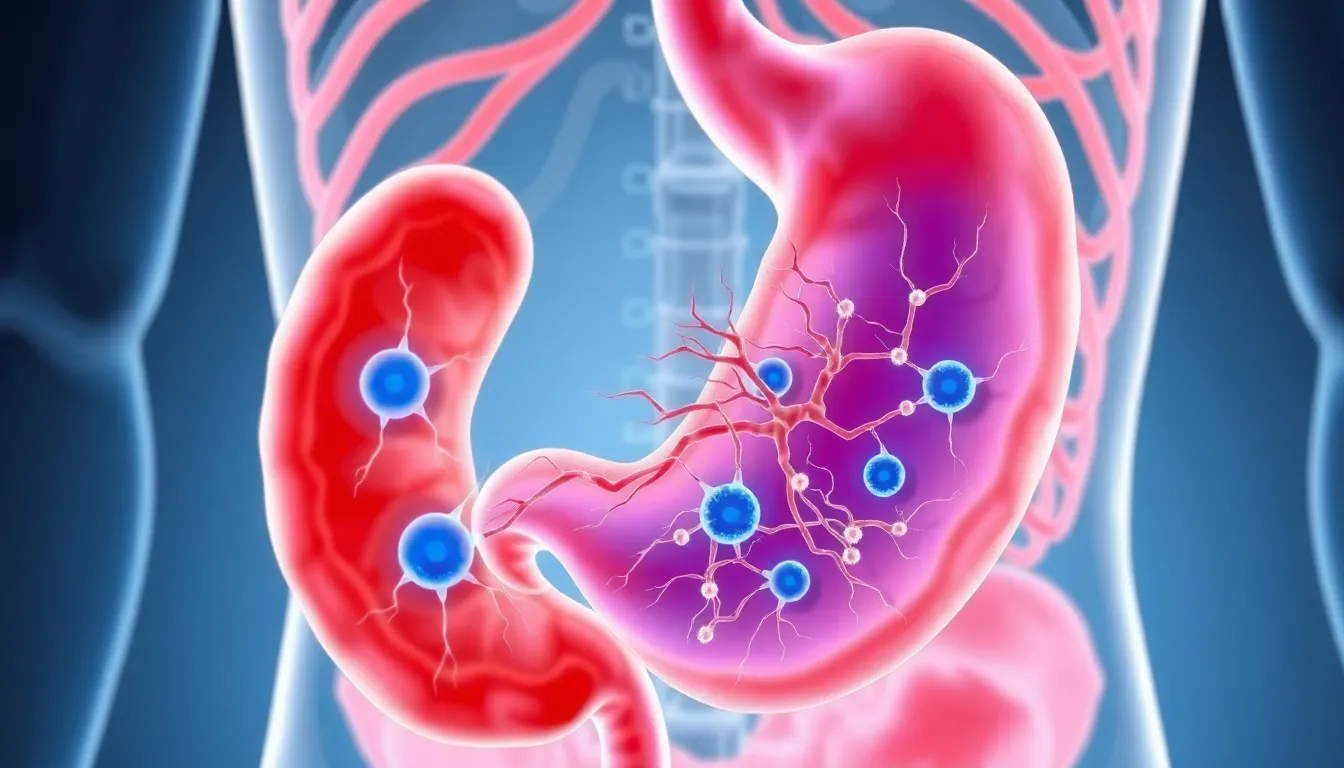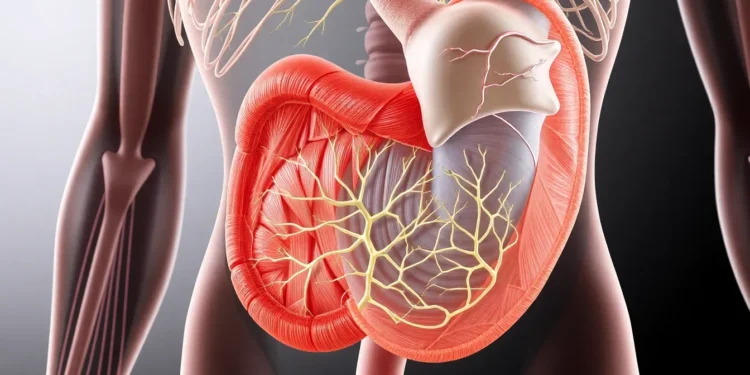When it comes to breaking down food, the stomach isn’t just a food processor; it’s a finely tuned orchestra. Picture this: nervous tissue as the conductor, guiding muscular tissue to perform its rhythmic symphony of contractions. Together, they transform that delicious meal into a nutrient-packed mush, ready for absorption.
But how exactly does this dynamic duo work? The nerves send signals that tell the stomach muscles when to squeeze and when to relax, ensuring everything works in harmony. It’s a fascinating dance of coordination that not only keeps the digestive system running smoothly but also ensures that those tacos don’t stage a rebellion. Dive into the intricate relationship between nervous and muscular tissues in the stomach, and discover how they collaborate to keep our digestive processes on point.
How Does Nervous Tissue Interact with Muscular Tissue in the Stomach to Break Down Food
Nervous tissue encompasses neurons and glial cells, crucial for transmitting signals throughout the body. These signals regulate many bodily functions, including digestion. Muscle tissue consists of specialized cells capable of contraction that facilitate movement. Three types of muscle tissues exist: skeletal, cardiac, and smooth.
Smooth muscle tissue primarily operates within the hollow organs, including the stomach. This involuntary muscle type contracts rhythmically to mix and propel food. Coordinated contractions create peristalsis, a wave-like motion essential for moving food through the digestive tract.
Nervous tissue plays a pivotal role in this process by sending signals to the smooth muscle. Enteric neurons, part of the autonomic nervous system, specifically govern gut activities. These neurons integrate sensory information from the gastrointestinal tract, adapting muscle contractions accordingly to optimize digestion.
The interaction between nervous and muscular tissue is vital for efficient digestive function. When food enters the stomach, sensory neurons detect its presence. This detection triggers reflex responses, initiating muscle contractions to break down food.
Neurotransmitters relay messages from nervous to muscular tissue, ensuring precise, timely responses. For instance, the release of acetylcholine stimulates muscle contractions, promoting the breakdown of food into a nutrient-rich mixture. This finely tuned communication between both tissue types illustrates their interdependence within the digestive system.
Both nervous and muscular tissues contribute to smooth digestion, facilitating nutrient absorption crucial for overall health. Understanding their roles highlights the complexity of the digestive process and the essential nature of their interaction in the stomach.
How Does Nervous Tissue Interact With Muscular Tissue in the Stomach to Break Down Food?

Nervous tissue in the stomach consists primarily of neurons and glial cells that communicate and coordinate gut activities. Its structure enables the effective regulation of digestive functions.
Types of Neurons Involved
Sensory neurons detect food within the stomach and relay critical information about its presence. Motor neurons trigger muscular contractions that facilitate the mechanical breakdown of food. Interneurons serve as connectors, integrating sensory input and motor output for a coordinated digestive response. Each type of neuron plays a specific role in the enteric nervous system, maintaining smooth operations during digestion.
Role of Neurotransmitters
Neurotransmitters act as chemical messengers between nervous and muscular tissues in the stomach. Acetylcholine is particularly significant, as it initiates muscle contractions essential for mixing food. Other neurotransmitters regulate various aspects of digestion by influencing motility and secretory functions. This chemical communication ensures the stomach’s muscle contractions occur accurately and promptly, allowing efficient food breakdown for nutrient absorption.
Muscular Tissue in the Stomach
Muscular tissue plays a vital role in the stomach’s function during digestion. Smooth muscle, a key component, facilitates rhythmic contractions that mix and propel food.
Types of Muscles Present
Three types of muscle tissues are essential in the stomach. Smooth muscle forms the majority and aids in involuntary contractions. Cardiac muscle, though primarily found in the heart, has properties resembling smooth muscle, ensuring the stomach’s compatibility with surrounding structures. Skeletal muscle mainly exists at the stomach’s opening and functions during voluntary actions, such as swallowing. Each muscle type contributes uniquely to the overall digestive process.
Mechanisms of Muscle Contraction
Muscle contraction in the stomach occurs through a coordinated process. When food enters, sensory neurons send signals that stimulate motor neurons. This stimulation triggers smooth muscle contractions, creating a churning motion. Calcium ions play a crucial role, activating myofilaments within the muscle fibers. Neurotransmitters like acetylcholine prompt these calcium releases. Consequently, this collaboration guarantees effective mixing and breakdown of food, optimizing nutrient absorption.
Interaction Between Nervous and Muscular Tissues
Nervous and muscular tissues interact seamlessly in the stomach, ensuring efficient digestion. Their relationship involves a complex signaling process that coordinates muscle contractions.
Neural Control of Muscle Activity
Neurons significantly influence the activity of muscular tissues in the stomach. They transmit signals that initiate contractions, with motor neurons directly engaging smooth muscle fibers. Enteric neurons play a key role in this control, connecting sensory information with motor activity. Acetylcholine acts as the primary neurotransmitter, facilitating communication between these tissues. On exposure to food, sensory neurons detect distension and stimulate motor neurons, prompting the necessary contractions. Such interactions maintain the rhythmic movements vital for effective mixing of food contents.
Reflex Arcs and Their Importance
Reflex arcs are crucial in integrating sensory input with muscular responses during digestion. Sensory neurons quickly relay information about food in the stomach to interneurons. Interneurons process this information and activate motor neurons, ensuring timely muscle contractions. This process allows for immediate adjustments in muscle activity based on the type and volume of food present. Through reflex arcs, the stomach adjusts its contractions, optimizing the breakdown and movement of food. Such functionality highlights the importance of this neural-muscular interaction in efficient digestive processes.
The Process of Digestion in the Stomach
Digestion in the stomach involves a dynamic interplay between nervous and muscular tissues. This collaboration ensures efficient food breakdown and nutrient absorption.
Stomach Motility and Food Breakdown
Stomach motility refers to the rhythmic contractions of smooth muscle that mix food with digestive juices. These contractions, known as peristalsis, play a vital role in breaking down food into smaller particles. Acetylcholine, a key neurotransmitter, stimulates muscle contractions, enhancing the mixing process. As food experiences these contractions, it transforms into a semi-liquid substance called chyme. This mixture then prepares for further digestion in the intestines. The coordinated movements of the stomach maintain optimal conditions for digestive enzymes to function effectively, contributing to overall nutrient absorption.
Coordination of Nervous and Muscular Functions
Coordination between nervous and muscular functions is vital for smooth digestion. Sensory neurons detect food presence, transmitting signals that trigger motor neurons to activate smooth muscle contractions. Enteric neurons process sensory information, enabling the stomach to adjust contractions based on food type and volume. Reflex arcs facilitate immediate responses, ensuring that contractions occur as needed. This interaction optimizes digestion, allowing food to be broken down efficiently while maintaining the necessary balance of digestive activities. The precise signaling between nervous and muscular tissues highlights the complexity of the digestive system’s operations.
Conclusion
The interaction between nervous and muscular tissues in the stomach is a remarkable example of biological coordination. This relationship is essential for breaking down food effectively and ensuring nutrient absorption. By transmitting signals and initiating contractions, nervous tissue guides muscular movements, allowing the stomach to perform its critical digestive functions seamlessly.
The precise communication facilitated by neurotransmitters and reflex arcs highlights the intricate nature of digestion. Understanding this dynamic interplay not only emphasizes the importance of these tissues in the digestive process but also underscores their vital roles in overall health. As the stomach continues its rhythmic contractions, it showcases the sophisticated harmony between nervous and muscular systems that keeps digestion running smoothly.











